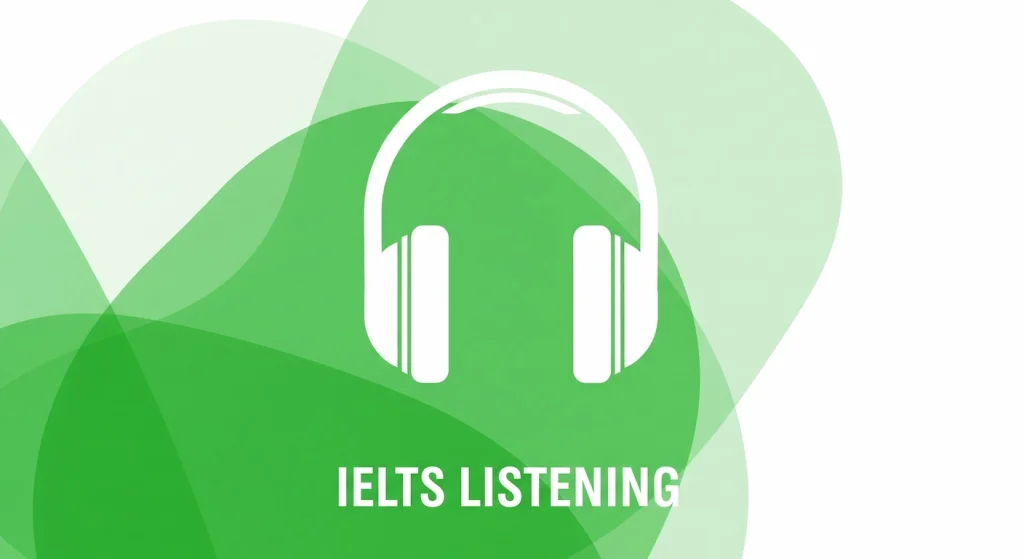
Does your heart beat a little faster when the invigilator says, “You will now hear the recording for the IELTS Listening test”? Do you worry about missing a key detail or losing your place as the audio plays? You’re not alone. The IELTS Listening exam, with its various speakers, accents, and question types, can feel like a high-pressure race against time.
The good news is that this test isn’t a mystery. It has a clear and predictable structure. By understanding exactly what to expect in each of the four sections—from the common topics to the most frequent question types—you can transform your anxiety into confidence. This guide will break down the entire IELTS Listening exam, section by section, providing expert insights and strategies to help you navigate the test and achieve the score you deserve.
Section 1 is your warm-up. It’s designed to ease you into the test with a relatively straightforward conversation between two speakers. The context is always an everyday social situation. Think about real-life scenarios like booking a hotel room, inquiring about a gym membership, making travel arrangements, or signing up for a community event. The language used is practical and focuses on exchanging factual information like names, dates, numbers, and addresses.
The goal here is to find specific details. Unsurprisingly, the question types reflect this. You will almost certainly face some form of a “completion” task. Statistics show that the most common questions are:
These three types make up over 80% of all questions in Section 1. This means you must be an expert at quickly scanning a form or set of notes, predicting the type of information needed (e.g., a surname, a postcode, a price), and listening for that specific detail.
In these conversations, one speaker often suggests something, and the other either agrees, disagrees, or makes a correction. The final, agreed-upon detail is always the correct answer. The examiners use this to trick candidates who write down the first piece of information they hear. Pay close attention to phrases like:
The answer will almost always follow one of these cues.
In Section 2, the format changes. You will listen to a monologue—one person speaking—on a topic of general interest. This could be a tour guide explaining the history of a museum, a radio broadcast about a local festival, a welcome talk for new students, or advice on a social program. The purpose is to convey factual information, descriptions, or instructions to a general audience.
The focus here shifts from simple detail-finding to understanding the structure of the information presented. The most popular question types in the IELTS Listening exam for this section are:
The prevalence of map and plan labelling is a key feature of Section 2. You may have to follow directions (e.g., “turn left at the main entrance and the library will be on your right”) to locate places on a given diagram.
Because this is a monologue, the speaker won’t be corrected. Instead, the challenge comes from paraphrasing. The words in the questions will rarely be the exact same words you hear in the recording. Before the audio starts, you must underline keywords in the questions and think of possible synonyms. For example, if the question mentions “annual fee,” you might hear the speaker talk about the “cost per year.”
This is where the academic focus of the IELTS exam truly begins. Section 3 is a conversation involving up to four speakers in an educational or training context. The most common scenario is two or three students discussing a project or assignment with their university tutor. The conversation is more complex, the vocabulary is more academic, and the speakers’ opinions and attitudes become important.
The complexity of the conversation is reflected in the question types. While you will still see completion tasks, other types that test a deeper understanding become more common:
MCQs are particularly dominant here because they can effectively test your understanding of speakers’ opinions, agreements, and the reasons behind their decisions.
Success in Section 3 depends on your ability to follow the flow of the academic argument. It’s not just about what is said, but how and why. Pay very close attention to discourse markers—words that signal relationships between ideas (e.g., “however” signals a contrast, “therefore” signals a result). Also, listen carefully for referents (words like “it,” “they,” “that issue”) and make sure you know what they refer to.
Section 4 is the final and most challenging part of the IELTS Listening exam. It is a monologue, similar to a university lecture, on an academic subject. You will listen to one speaker talk for several minutes without any break in the middle. This tests your ability to sustain concentration and follow a complex, structured academic talk.
The questions in this section require you to understand the main ideas and the structure of the lecture. The most common question types are:
Note and sentence completion are very popular here because they mirror the way a student would take notes during a real lecture, focusing on main points and supporting details.
In this final section, you need to go beyond just listening for facts. You are expected to make inferences, which means understanding the speaker’s purpose, their degree of certainty, and the relationships between ideas (e.g., cause and effect, comparison). The language will be highly academic, and the paraphrasing will be very sophisticated. Use the question structure as a “map” to guide you through the lecture’s content.
To tie it all together, here are some universal rules for test day:
DOs
DON’Ts
The IELTS Listening exam is a test of skill, strategy, and stamina. Each section presents a unique challenge, moving from everyday conversations to complex academic lectures. By understanding this structure and preparing for the specific question types in each part, you can approach the test methodically and confidently.
Get instant, AI-powered feedback on your IELTS essays. Improve your writing, structure, and vocabulary with WritewiseAI’s world-class technology.